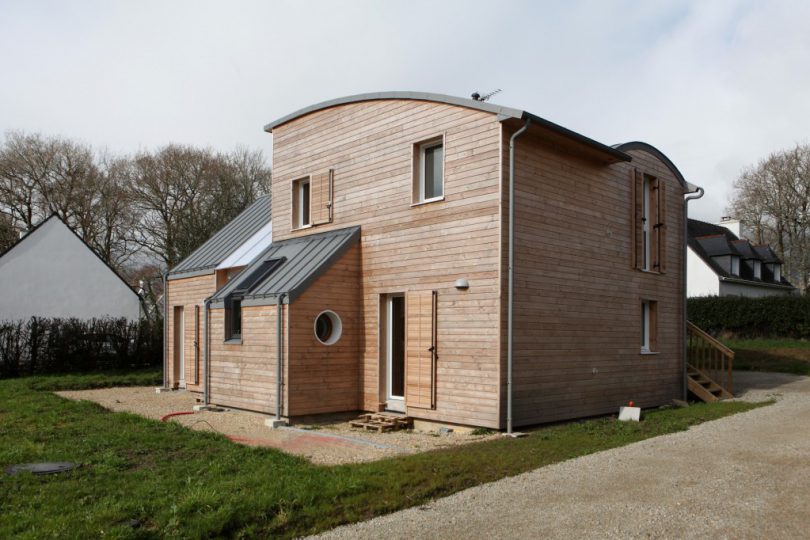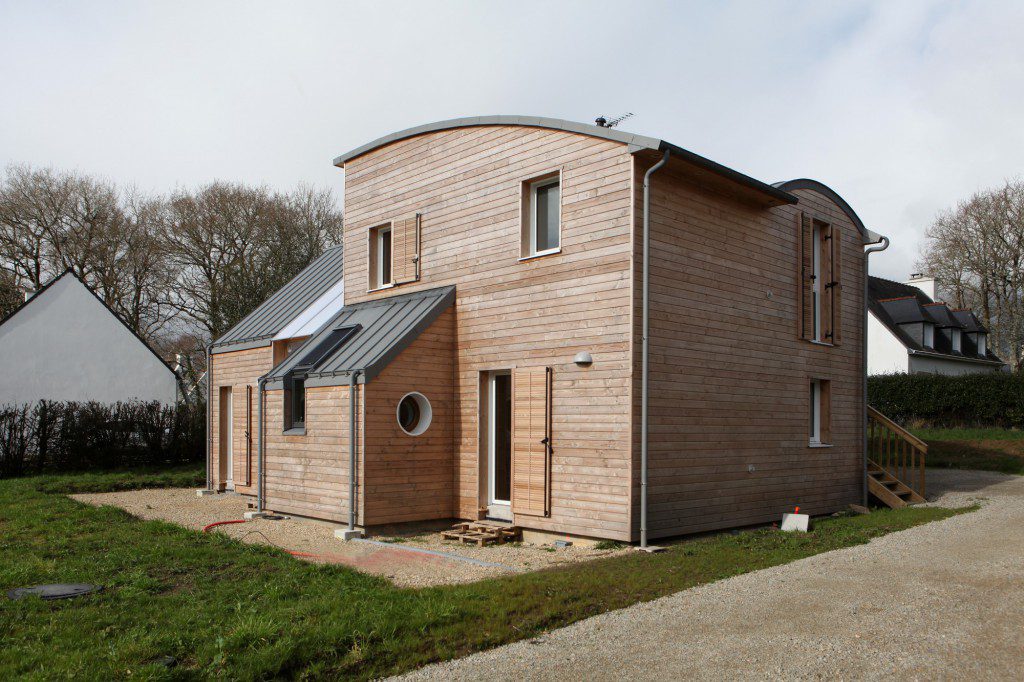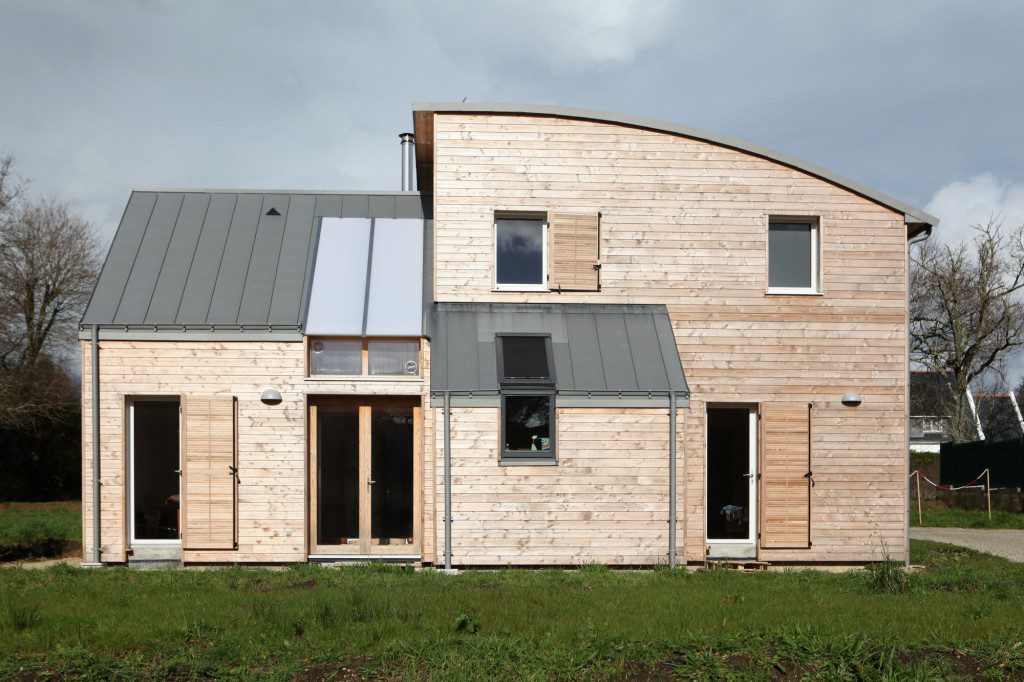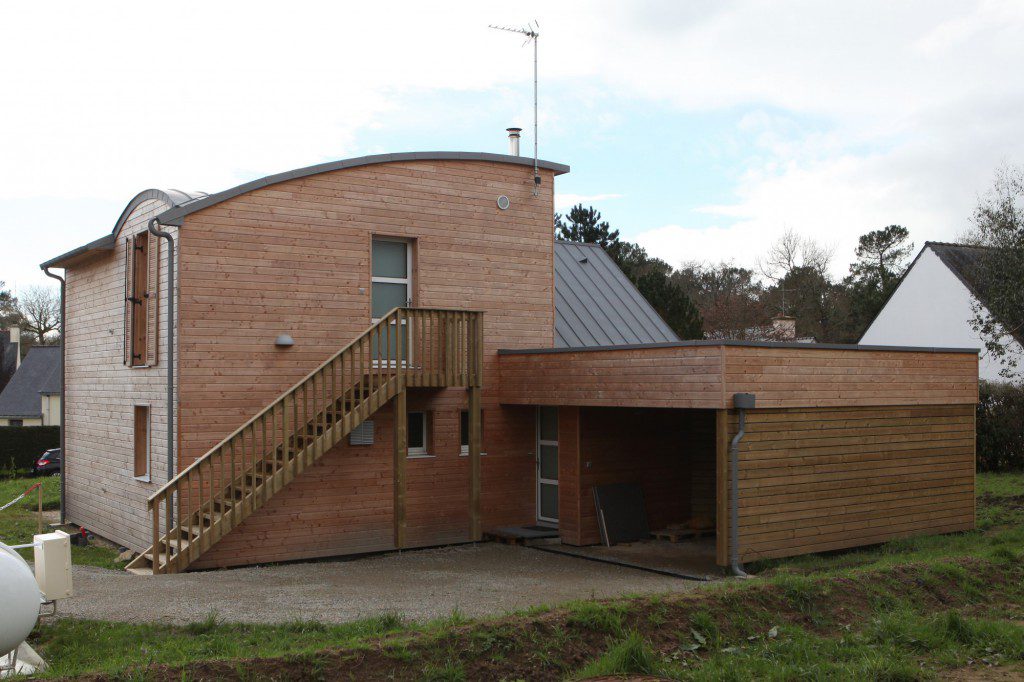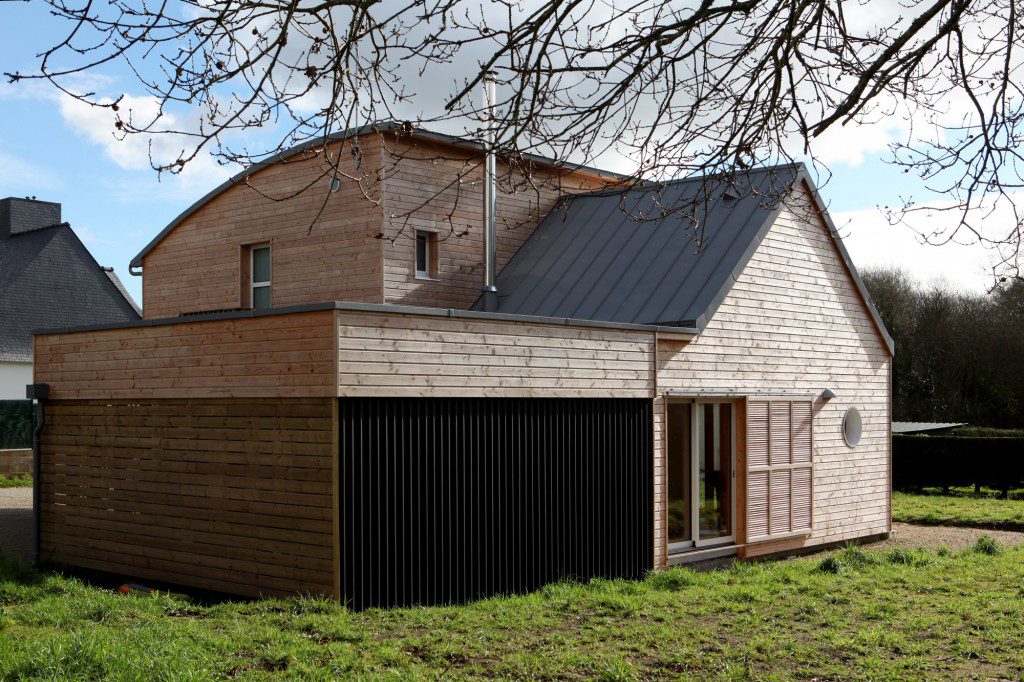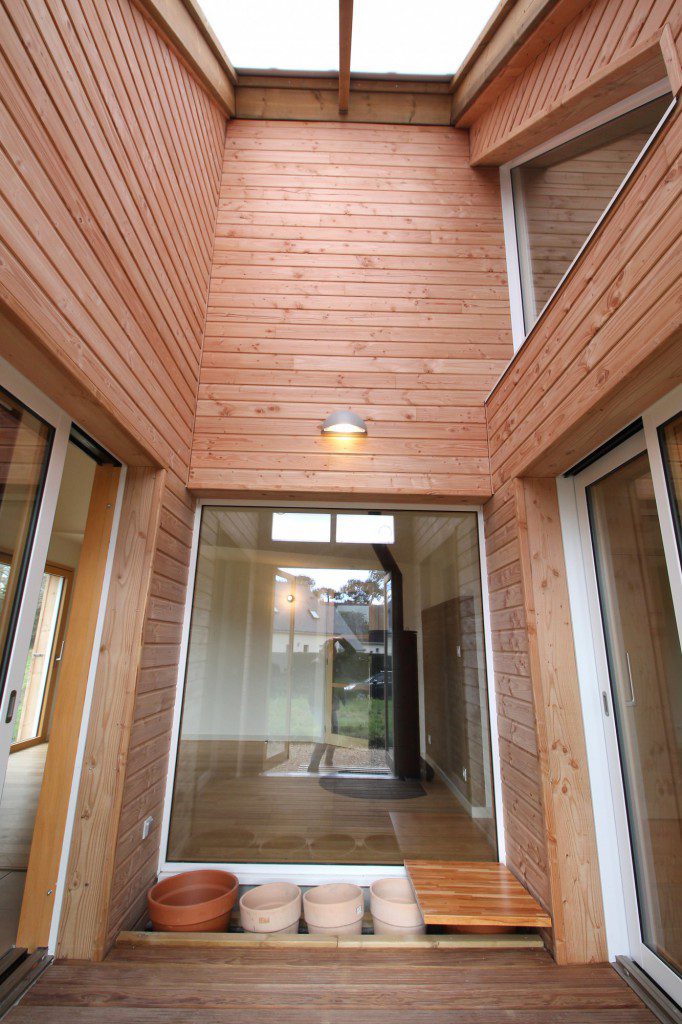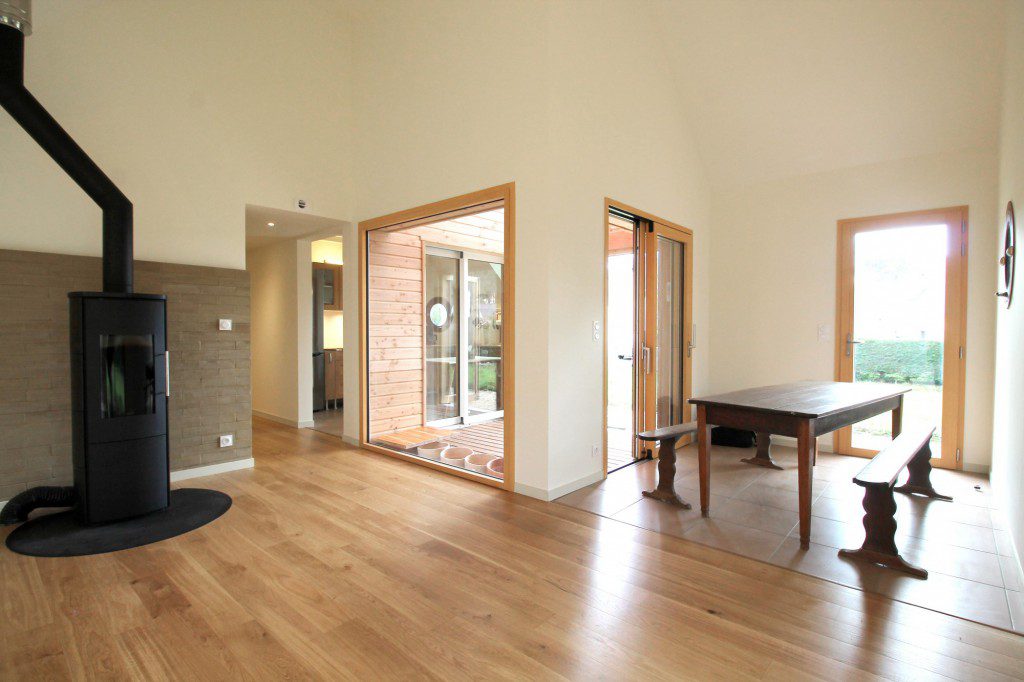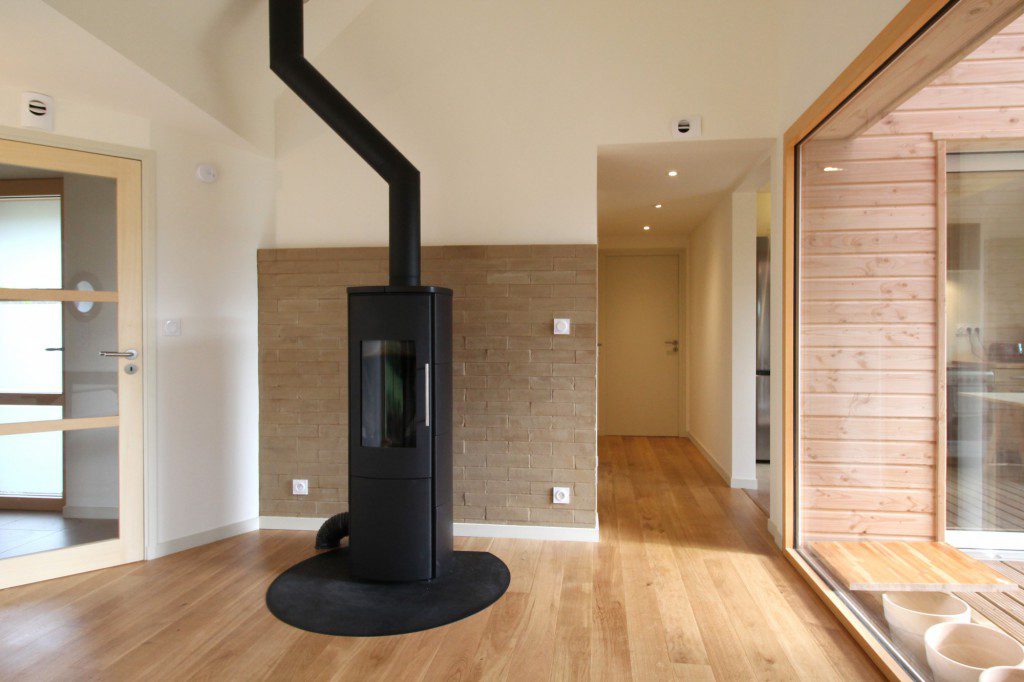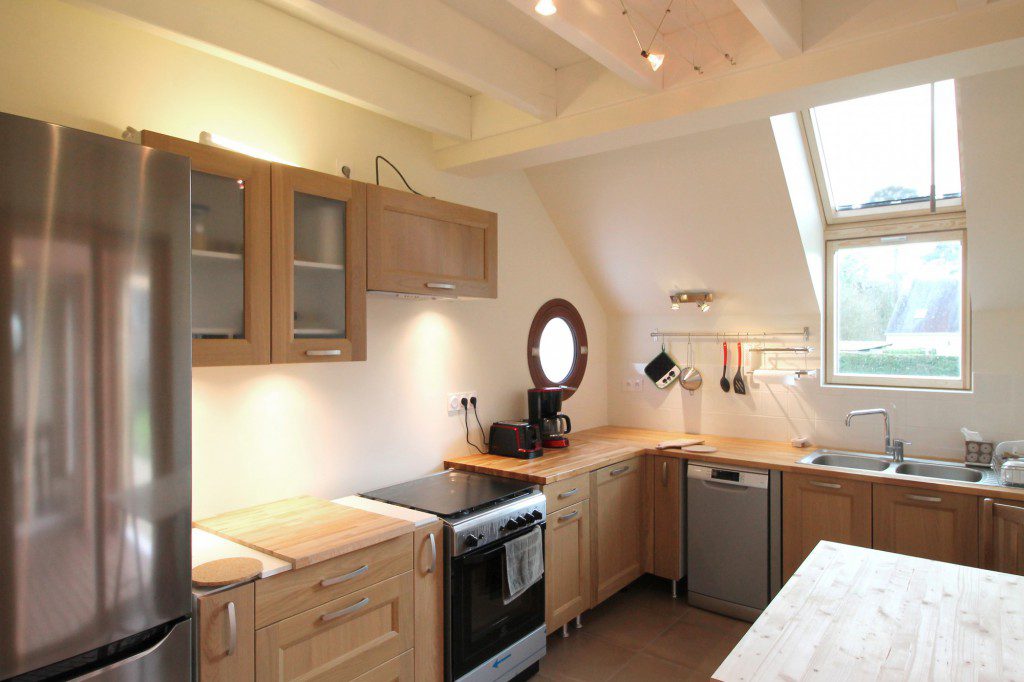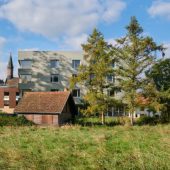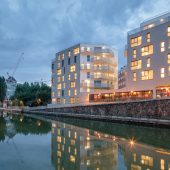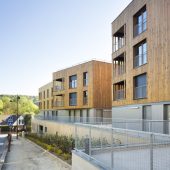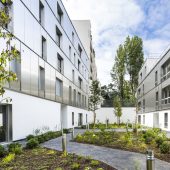The main objective of this project was to build a house adapted to the marine climate of Brittany in compliance with the French RT 2012 energy regulations using bio-sourced materials and including elements such as a conservatory, a wood-burning stove and a two-way airflow central ventilation system.
It was through searching the web for information on passive buildings with arched roofs that the project manager chose an architect who also aims to create healthy living conditions in a natural environment.
The house in RIEC SUR BELON, a town known for its fine oysters, is composed of three distinct sections.
The car-port is a wood-frame structure covered with slatted cladding to the north, anthracite zinc to the west and a low-pitched zinc roof with standing seams.
The second section is an entrance hall with a double-pitched roof leading into the main living space.The ground floor of the largest section includes a stair well, a storeroom, a bedroom with ensuite bathroom and a kitchen which has access to the conservatory. Upstairs, under an arched roof are a study with views over the conservatory and the street and a small flat.
The structure is a combined wood/concrete frame : the wood frame is insulated with 60cm wood tissue fibre and clad in Douglas fir. The floor is made of 8/20 joists with fermacell insulation and parquet.
Concrete was chosen for the foundation slab and the crawl space walls, these are insulated in order to prevent heat transfer from the heated living space above. The north-facing walls of wood uprights and 140mm rockwool have external insulation. Plastered on the inside, they ensure thermal mass for year-round comfort within the house. The wood frame has 145mm cellulose wadding insulation and the roof structure is insulated with 300mm rockwool, each of which are made airtight with a vapour shield.
The floors of the ground floor are insulated by 2x50mm cork laid under the screed which is in turn laid with parquet, ceramic tiles or cork, depending on the room.
In addition to the wood-burning stove, there are two gas radiators and two electric heated towel-rails. Ventilation is ensured by the two-way airflow central system. Hot water is provided by a thermodynamic water heater. Rainwater is collected in a tank for toilet-flushing and watering the garden.
Alumninim window and door frames are lift-slide opening for the bay windows, other windows and doors open inwards.
Raw earth bricks clad the plastered concrete wall behind the wood-burning stove.
Thanks to the bioclimatic design, the house recieves sunlight all day long, and full advantage is made of solar input during winter. Slatted wooden sliding and latched shutters provide natural shade and ventilation. The conservatory is designed to regulate solar input with the help of plants and the opening and closing of doors…
The energy performance for a house which it is not intended to heat is 67,1 Kwh/m²…
With its organic architecture, high energy efficiency and use of ecological materials this house demonstrates one of the rules of David Pearson’s Gaia Charter, « Let architecture be inspired by nature and be sustainable, healthy, conserving and diverse. »
By A.TYPIQUE
